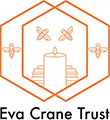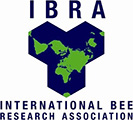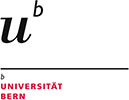World Honey Bee Health
ABOUT
WORLD HONEY BEE HEALTH – A COLOSS TASK FORCE: an integrative resource on the global distribution of western honey bee pests and pathogens
The health of managed colonies of western honey bees (Apis mellifera) is a topic of international concern given the importance of honey bees to crop pollination, the overall function of natural ecosystems, and the improvement of human livelihoods through the sale of bee products. Honey bees host a suite of pests and pathogens, many of which can kill colonies outright. Knowing the global distribution of these pests and pathogens is key to developing strategies for their control and limiting their spread.
Nicola Bradbear(1988) and Andrew Matheson (1993, 1995, 1996) were first to publish reviews of the global distribution of honey bee pests and pathogens. Their work was updated several years later by Mark Allen and Brenda Ball (1996), who published information on virus incidence and global distribution, and by Jamie Ellis and Pamela Munn(2005) who expanded, updated, and consolidated the earlier reviews.
Led by Humberto Boncristiani and Jamie Ellis, members of the University of Florida Honey Bee Research and Extension Laboratory (ufhoneybee.com) published an update in the journal Bee World in 2020. The most significant change in this update was the development of a website (worldhoneybeehealth.com) that housed new distribution maps for each pest and pathogen.
In 2021, the World Honey Bee Health effort became a Task Force of the COLOSS Honey Bee Research Association (https://coloss.org/). We believe that the very heart of this effort is rooted in a core mission of COLOSS – to mitigate colony losses to stressors such as pests and pathogens. Now, members of this COLOSS Task Force can keep information on the worldwide distribution of honey bee pests and pathogens updated in real time. It is our hope that this online resource will make a significant contribution to the study of honey bee health globally. We especially hope that this website will be a valuable tool to scientists, regulators, industry officials, beekeepers, and more as we all work together to improve the health of this invaluable bee species.
OBJECTIVES
The objectives of the World Honey Bee Health COLOSS Task Force are to:
- monitor and document the global distribution of Apis mellifera pests and pathogens, and
- serve as a resource for the honey bee research community/authorities to make science-based decisions that will improve the health of honey bees and the sustainability of beekeeping globally.
HOW CAN YOU USE THIS PAGE?
Pests & pathogens are always on the move:
We designed this website to provide information about the global distribution of pests and pathogens of the western honey bee (Apis mellifera). Information regarding the distribution of a specific pathogen or pest can be found by clicking on the Pathogens and Pests tab at the top of this page. This will take you to a table containing all the pathogens and pests known to be associated with honey bees. Clicking the name of a pest or pathogen will take you to information regarding the distribution of that organism. Clicking on MAP will take you to a downloadable PDF file that contains a world map showing the distribution of that pest or pathogen. Clicking on TABLE will take you to a table containing the countries where the organism has been found with a link to a reference noting the discovery of a pest or pathogen.
Updates and use of information:
To assure practicality for both readers and reviewers, we adopted an interactive system whereby the maps and tables provided can be updated as needed by the author team as new information becomes available. In the future, this strategy will allow for updates to the global honey bee health status as new pests/pathogens, updated nomenclature, and other changes emerge. This also allows readers/users to provide updates to us directly, updates that can include new occurrences of a pest/pathogen in a country, errors (inclusion or omission errors) in the online tables/maps, etc.
*Please be aware that we are in a transition phase for this project. The World Honey Bee Health Administrative Team is currently working to update all maps/tables on the website. Following these updates, users will be able to notify our team of any updates or errors that need to be addressed.
All tables and maps are free to download and use (they are open source). High resolution images were used to generate each map. Consequently, you can see country status by zooming into the region or country of interest if the land area is too small to see at the whole map level. All tables, maps, and the following manuscript must be cited appropriately at each use. The appropriate citation to include for maps and tables is:
Boncristiani, H., Ellis, J.D., Bustamante, T., Graham, J., Jack, C., Kimmel, C.B., Mortensen, A., Schmehl, D.R. 2021. World honey bee health: the global distribution of western honey bee (Apis mellifera L.) pests and pathogens. Bee World, 98(1): 2 – 6. https://doi.org/10.1080/0005772X.2020.1800330.
PATHOGENS & PESTS
What follows is a list of the pathogens and pests known to be associated with honey bees. The criteria used to select the data presented in the tables below can be found HERE.
Bacteria
| Common name | Organism | Map Link | Table Link |
| European foulbrood | Melissococcus plutonius | MAP | TABLE |
| American foulbrood | Paenibacillus larvae | MAP | TABLE |
| Spiroplasma apis | Spiroplasma apis | MAP | TABLE |
| Spiroplasma melliferum | Spiroplasma melliferum | MAP | TABLE |
| Wolbachia | Wolbachia | MAP | TABLE |
Fungi
| Chalkbrood | Ascosphaera apis | MAP | TABLE |
| Nosema ceranae | Nosema ceranae | MAP | TABLE |
| Nosema apis | Nosema apis | MAP | TABLE |
| Nosema neumanni | Nosema neumanni | MAP | TABLE |
| Nosema spp. | Nosema apis + Nosema ceranae + Nosema neumanni | MAP | TABLE |
Protozoa
| Apicystis bombi | Apicystis bombi | MAP | TABLE |
| Crithidia mellificae | Crithidia mellificae | MAP | TABLE |
| Lotmaria passim | Lotmaria passim | MAP | TABLE |
| Amoeba disease | Malpighamoeba mellificae | MAP | TABLE |
Arthropods
| Tracheal Mite | Acarapis woodi | MAP | TABLE |
| Small Hive Beetle | Aethina tumida | MAP | TABLE |
| Apocephalus borealis | Apocephalus borealis | MAP | TABLE |
| Lesser Wax Moth | Achroia grisella | MAP | TABLE |
| Braula | Braula spp. | MAP | TABLE |
| Greater Wax Moth | Galleria mellonella | MAP | TABLE |
| Megaselia rufipes | Megaselia rufipes | MAP | TABLE |
| Megaselia scalaris | Megaselia scalaris | MAP | TABLE |
| Rondaniooestrus apivorus | Rondaniooestrus apivorus | MAP | TABLE |
| Senotainia tricuspis | Senotainia tricuspis | MAP | TABLE |
| Tropilaelaps Mite | Tropilaelaps spp. | MAP | TABLE |
| Varroa Mite | Varroa destructor | MAP | TABLE |
| Asian Hornet | Vespa velutina | Coming soon | Coming soon |
| Giant Asian Hornet | Vespa mandarinia | Coming soon | Coming soon |
| Wax Moth | Galleria mellonella + Achroia grisella | MAP | TABLE |
Viruses
| ABPV/KBV/IAPV | Acute Bee Paralysis Virus | MAP | TABLE |
| ABV | Apis mellifera bunyavirus 1 and 2 | MAP | TABLE |
| ADV | Apis mellifera dicistrovirus | MAP | TABLE |
| AFV | Apis mellifera flavivirus | MAP | TABLE |
| ANV-1 | Apis mellifera Nora Virus | MAP | TABLE |
| ARV | Apis mellifera Rhabdovirus 1 and 2 | MAP | TABLE |
| AIV | Apis iridescence virus | MAP | TABLE |
| ALPV | Aphid Lethal Paralysis Virus | MAP | TABLE |
| ArkBV | Arkansas Bee Virus | MAP | TABLE |
| BeeMLV | Bee Macula-like Virus | MAP | TABLE |
| BVX | Bee Virus X | MAP | TABLE |
| BVY | Bee Virus Y | MAP | TABLE |
| BerkBPV | Berkeley Bee Virus | MAP | TABLE |
| BSRV | Big sioux river Virus | MAP | TABLE |
| BQCV | Black Queen Cell Virus | MAP | TABLE |
| BBV# | Bundaberg bee virus | MAP | TABLE |
| Circo-like Virus 1-2 | Circo-like virus 1-2 | MAP | TABLE |
| CPV | Cricket paralysis virus | MAP | TABLE |
| CBPV | Chronic Bee Paralysis Virus | MAP | TABLE |
| CBPSV | Chronic bee-paralysis virus-associated satellite virus | MAP | TABLE |
| CWV | Cloudy Wing Virus | MAP | TABLE |
| NT1/NT-6/NT-17 | Darwin bee virus | MAP | TABLE |
| DWV *# | Deformed Wing Virus (A_B_C_D) | MAP | TABLE |
| EV# | Empeyrat Virus | MAP | TABLE |
| FV | Filamentous Virus | MAP | TABLE |
| Himetobi P Virus | Himetobi p virus | MAP | TABLE |
| TAS-7/ | Hobart Bee Virus | MAP | TABLE |
| KFV | Kelp Fly Virus | MAP | TABLE |
| LSV# | Lake Sinai Virus | MAP | TABLE |
| La Jolla Virus | La jolla virus | MAP | TABLE |
| MV | Moku Virus | MAP | TABLE |
| Nlv | Nodamura-like virus | MAP | TABLE |
| Plv | Partiti-like virus | MAP | TABLE |
| PBV# | Perth bee virus 1 and 2 | MAP | TABLE |
| RBV-1 | Renmark bee virus 1 | MAP | TABLE |
| RpV | Rhopalosiphum padi Virus | MAP | TABLE |
| Rbv# | Robinvale bee virus | MAP | TABLE |
| SBV | Sacbrood Virus | MAP | TABLE |
| Slv | Seco-like virus | MAP | TABLE |
| SBPV | Slow Bee Paralysis Virus | MAP | TABLE |
| Thika Virus | Thika Virus | MAP | TABLE |
| TRV | Tobacco ringspot virus | MAP | TABLE |
| VdMLV | Varroa destructor Macula-Like Virus | MAP | TABLE |
| VdV-2/3/4# | Varroa destructor Virus-2+3+4 | MAP | TABLE |
| VTLV | Varroa Tymo-like virus | MAP | TABLE |
Other
- *Deformed Wing Virus (DWV) is recognized as four distinct variants: (1) DWV-A, the original strain studied plus Kakugo virus; (2) DWV-B, the new classification of Varroa destructor virus 1 (VDV-1); (3) DWV-C, the newly discovered, more virulent variant of DWV and (4) DWV-D, known as the Egypt bee virus.
- #Future updates of this table will contain all pathogen strains separated in specific maps and tables. For clarity, we combined the strains into single species.
- Map – link to a map showing the updated distribution of the pest.
- TABLE – link to a table showing specific information about the pest.
MEET THE TEAM
The World Honey Bee Health Task Force is administered by a team of Regional Coordinators.
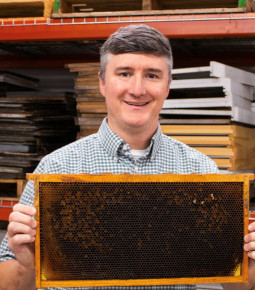 Task Force Chair Dr. Ellis is the Gahan Endowed Professor of Entomology in the Entomology and Nematology Department at the University of Florida (UF). At the University of Florida, Dr. Ellis has responsibilities in extension, instruction, and research related to honey bees. Regarding his extension work, Dr. Ellis created the UF Bee College, the UF Master Beekeeper Program, Two Bees in a Podcast, and the YouTube Beekeeping Academy series. As an instructor, Dr. Ellis supervises Ph.D. and MS students studying honey bees. Dr. Ellis and his team conduct research projects in the fields of honey bee husbandry and ecology. He is also a Council Member for the International Bee Research Association (IBRA) and an editor of the COLOSS BEEBOOK series.
Task Force Chair Dr. Ellis is the Gahan Endowed Professor of Entomology in the Entomology and Nematology Department at the University of Florida (UF). At the University of Florida, Dr. Ellis has responsibilities in extension, instruction, and research related to honey bees. Regarding his extension work, Dr. Ellis created the UF Bee College, the UF Master Beekeeper Program, Two Bees in a Podcast, and the YouTube Beekeeping Academy series. As an instructor, Dr. Ellis supervises Ph.D. and MS students studying honey bees. Dr. Ellis and his team conduct research projects in the fields of honey bee husbandry and ecology. He is also a Council Member for the International Bee Research Association (IBRA) and an editor of the COLOSS BEEBOOK series.
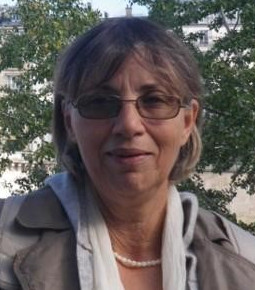 Task Force Co-Vice Chair & European Coordinator Dr. Bouga is Scientific Collaborator in the Laboratory of Agricultural Zoology and Entomology of the Agricultural University of Athens in Greece. Her research and teaching activities cover aspects of molecular taxonomy, genetics, and apiculture, focusing specifically on the genetics of honey bees, honey dew insects, and Varroa destructor. She is a member of the Executive Committee of the COLOSS Honey Bee Research Association and is the Senior Editor of the Journal of Apicultural Research (JAR).
Task Force Co-Vice Chair & European Coordinator Dr. Bouga is Scientific Collaborator in the Laboratory of Agricultural Zoology and Entomology of the Agricultural University of Athens in Greece. Her research and teaching activities cover aspects of molecular taxonomy, genetics, and apiculture, focusing specifically on the genetics of honey bees, honey dew insects, and Varroa destructor. She is a member of the Executive Committee of the COLOSS Honey Bee Research Association and is the Senior Editor of the Journal of Apicultural Research (JAR).
 Task Force Co-Vice Chair & South America Coordinator Dr. Kadri has an extensive background in honey bee husbandry. His expertise includes genome wide association studies, gene expression, and transcriptome analyses concerning bee ecotoxicology with African-derived Apis mellifera. He serves on the Scientific Technical Committee of the Brazilian Beekeeping Confederation (CBRACA). Additionally, Dr. Kadri is a member of the board of directors for three beekeepers’ associations in Brazil and works as a field technician for small, medium, and large beekeepers across the country. He is also the founder of HoneyBee Apiaries Company, which engages in the commercial production of propolis, honey, and wax.
Task Force Co-Vice Chair & South America Coordinator Dr. Kadri has an extensive background in honey bee husbandry. His expertise includes genome wide association studies, gene expression, and transcriptome analyses concerning bee ecotoxicology with African-derived Apis mellifera. He serves on the Scientific Technical Committee of the Brazilian Beekeeping Confederation (CBRACA). Additionally, Dr. Kadri is a member of the board of directors for three beekeepers’ associations in Brazil and works as a field technician for small, medium, and large beekeepers across the country. He is also the founder of HoneyBee Apiaries Company, which engages in the commercial production of propolis, honey, and wax.
 Africa Coordinator Dr. Nganso is a Research Scientist in the Environmental Health Theme at the International Centre of Insect Physiology and Ecology (ICIPE), Nairobi, Kenya. She holds a PhD (2019) and MSc. (2012) in entomology from the University of Pretoria, South Africa, and the University of Ghana, respectively, and a BSc in Zoology (2009) from the University of Buea, Cameroon. Before joining icipe, she worked as a Postdoctoral Fellow (2019–2022) at the Agricultural Research Organization, the Volcani Center, Israel. Her research examines the mechanisms underlying health and biodiversity in insect pollinators as they interact with associated biotic/abiotic stressors to improve their health and productivity. Beatrice is also an active COLOSS Regional Coordinator for Africa, and an active participant in the Colony Loss Monitoring Core Project of COLOSS.
Africa Coordinator Dr. Nganso is a Research Scientist in the Environmental Health Theme at the International Centre of Insect Physiology and Ecology (ICIPE), Nairobi, Kenya. She holds a PhD (2019) and MSc. (2012) in entomology from the University of Pretoria, South Africa, and the University of Ghana, respectively, and a BSc in Zoology (2009) from the University of Buea, Cameroon. Before joining icipe, she worked as a Postdoctoral Fellow (2019–2022) at the Agricultural Research Organization, the Volcani Center, Israel. Her research examines the mechanisms underlying health and biodiversity in insect pollinators as they interact with associated biotic/abiotic stressors to improve their health and productivity. Beatrice is also an active COLOSS Regional Coordinator for Africa, and an active participant in the Colony Loss Monitoring Core Project of COLOSS.
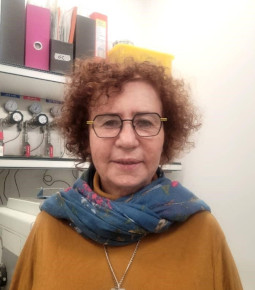 Israel & Russia Coordinator Dr. Soroker is a Senior Researcher specializing in chemical ecology, physiology and integrated pest management in the Department of Entomology, Chemistry, and Nematology, Volcani Center, Israel. She joined COLOSS in 2008. Her research foci include evaluating the level and causes of honey bee colony losses. Furthermore, she works to develop an integrated approach to Varroa destructor management, including methods directed at reduction of mite fitness and promoting honey bee individual and social resistance to the mite via breeding. Much of her research is done in collaboration with COLOSS members, as she is an active participant in the Monitoring Core Project, Varroa Control, RNSBB, and the Honey Bee Health Task Forces. She is a member of the Executive Committee of COLOSS, a member of the International Bee Research Association Council, and an Editorial Board member of the Journal of Apicultural Research.
Israel & Russia Coordinator Dr. Soroker is a Senior Researcher specializing in chemical ecology, physiology and integrated pest management in the Department of Entomology, Chemistry, and Nematology, Volcani Center, Israel. She joined COLOSS in 2008. Her research foci include evaluating the level and causes of honey bee colony losses. Furthermore, she works to develop an integrated approach to Varroa destructor management, including methods directed at reduction of mite fitness and promoting honey bee individual and social resistance to the mite via breeding. Much of her research is done in collaboration with COLOSS members, as she is an active participant in the Monitoring Core Project, Varroa Control, RNSBB, and the Honey Bee Health Task Forces. She is a member of the Executive Committee of COLOSS, a member of the International Bee Research Association Council, and an Editorial Board member of the Journal of Apicultural Research.
 Middle East Coordinator Dr. Kandemir is a Professor at the Department of Biology, Faculty of Science, at Ankara University, Ankara, Türkiye. He obtained his Ph.D. in honey bee population genetics from Middle East Technical University, Ankara – Türkiye. He spent many years working in APIS molecular systematics laboratory of W.S. Sheppard at the Department of Entomology at WSU, Pullman, WA, USA. Dr. Kandemir conducted studies not only on honey bee diversity, but also Colorado potato beetle, olive fly, house fly, and mosquito population genetics in Türkiye. He supervised many graduate theses on honey bee population genetics, Nosema disease and Varroa destructor. He serves as an editorial board member of the Journal of Apicultural Research. He is also an Advisory Board member of the Turkish Scientific and Research Council. He has been a member of COLOSS and RNSBB since 2015.
Middle East Coordinator Dr. Kandemir is a Professor at the Department of Biology, Faculty of Science, at Ankara University, Ankara, Türkiye. He obtained his Ph.D. in honey bee population genetics from Middle East Technical University, Ankara – Türkiye. He spent many years working in APIS molecular systematics laboratory of W.S. Sheppard at the Department of Entomology at WSU, Pullman, WA, USA. Dr. Kandemir conducted studies not only on honey bee diversity, but also Colorado potato beetle, olive fly, house fly, and mosquito population genetics in Türkiye. He supervised many graduate theses on honey bee population genetics, Nosema disease and Varroa destructor. He serves as an editorial board member of the Journal of Apicultural Research. He is also an Advisory Board member of the Turkish Scientific and Research Council. He has been a member of COLOSS and RNSBB since 2015.
 North America Coordinator Dr. Alburaki is a Scientific Researcher at the United States Department of Agriculture, Bee Research Laboratory, in Beltsville, Maryland, USA. He obtained his Ph.D. in honey bee genetics and behavior from the Sorbonne University, Paris, France. He is a lifelong beekeeper who has practiced beekeeping in many countries. Dr. Alburaki conducted extensive scientific research on honey bee diversity, evolution, functional genomics, and toxicity during his professional career in the Middle East, France, Canada, and the U.S. He currently supervises the Bee Disease Diagnostic services at the USDA-ARS Bee Research Laboratory. His research’s ultimate objective is to develop sustainable strategies to promote and enhance the performance and health of honey bee colonies in contemporary agricultural ecosystems.
North America Coordinator Dr. Alburaki is a Scientific Researcher at the United States Department of Agriculture, Bee Research Laboratory, in Beltsville, Maryland, USA. He obtained his Ph.D. in honey bee genetics and behavior from the Sorbonne University, Paris, France. He is a lifelong beekeeper who has practiced beekeeping in many countries. Dr. Alburaki conducted extensive scientific research on honey bee diversity, evolution, functional genomics, and toxicity during his professional career in the Middle East, France, Canada, and the U.S. He currently supervises the Bee Disease Diagnostic services at the USDA-ARS Bee Research Laboratory. His research’s ultimate objective is to develop sustainable strategies to promote and enhance the performance and health of honey bee colonies in contemporary agricultural ecosystems.
 Oceania Coordinator Dr. Mortensen is a Senior Scientist in the Bee Biology and Productivity Team at The New Zealand Institute for Plant and Food Research Ltd. She has a keen interest in animal behaviour and biology that led her to begin her career as a zookeeper in San Antonio, Texas, USA, and then to keeping honey bees as a hobby. Quickly, her fascination with the physiology and collective behaviour of colonies grew to the point that she began graduate study at the University of Florida, USA. Currently, her team conducts basic and applied research with relevance to Aotearoa-New Zealand’s beekeeping, horticultural, and arable industries to improve bee health and productivity for enhanced honey production and pollination service delivery while minimising negative impacts to endemic species and ecosystems.
Oceania Coordinator Dr. Mortensen is a Senior Scientist in the Bee Biology and Productivity Team at The New Zealand Institute for Plant and Food Research Ltd. She has a keen interest in animal behaviour and biology that led her to begin her career as a zookeeper in San Antonio, Texas, USA, and then to keeping honey bees as a hobby. Quickly, her fascination with the physiology and collective behaviour of colonies grew to the point that she began graduate study at the University of Florida, USA. Currently, her team conducts basic and applied research with relevance to Aotearoa-New Zealand’s beekeeping, horticultural, and arable industries to improve bee health and productivity for enhanced honey production and pollination service delivery while minimising negative impacts to endemic species and ecosystems.
 South Central Asia Coordinator Dr. Chakroborty is an Assistant Professor in the Department of Cognitive Science at Thapar School of Liberal Arts and Sciences, Thapar Institute of Engineering and Technology in Punjab, India. His research focuses on the health and well being of honey bees. Dr. Chakroborty is investigating the toxicity signatures of the organophosphate, neonicotinoid and pyrethroid insecticides at the cognitive, neural, and molecular levels in Apis mellifera. His lab is also working on the potential detoxification effects of phytochemicals to ameliorate insecticide induced toxicity. Further, he performs fundamental research on the learning and memory mechanisms in Apis mellifera. Dr. Chakroborty teaches undergraduate and postgraduate courses and trains Ph.D. students.
South Central Asia Coordinator Dr. Chakroborty is an Assistant Professor in the Department of Cognitive Science at Thapar School of Liberal Arts and Sciences, Thapar Institute of Engineering and Technology in Punjab, India. His research focuses on the health and well being of honey bees. Dr. Chakroborty is investigating the toxicity signatures of the organophosphate, neonicotinoid and pyrethroid insecticides at the cognitive, neural, and molecular levels in Apis mellifera. His lab is also working on the potential detoxification effects of phytochemicals to ameliorate insecticide induced toxicity. Further, he performs fundamental research on the learning and memory mechanisms in Apis mellifera. Dr. Chakroborty teaches undergraduate and postgraduate courses and trains Ph.D. students.
 Southeast Asia Coordinator Dr. Suwannapong is a Professor of Entomology in the Department of Biology, Faculty of Science, Burapha University, Chon Buri, Thailand. She received her B.Sc. and M.Sc. in Zoology from the Department of Biology, Faculty of Science, Chulalongkorn University, Bangkok, Thailand, and her Ph.D. in Biological Sciences (Entomology) from Faculty of Science, Chulalongkorn University, Bangkok, Thailand. She did her postdoctoral fellowship at the Department of Entomology, Michigan State University, East Lansing, Michigan, USA. She received a Fulbright scholarship as a visiting professor at the Section of Ecology, Behavior and Evolution, Division of Biological Sciences, University of California, San Diego, California, USA. She was a visiting professor at the Department of Zoologie, Martin-Luther University, Halle-Wittenberg, Halle/Saale, Germany, and the Department of Entomology, University of Hamburg, Hamburg, Germany. Her research focuses on honey bee histopathology, diseases, and honey bee communication.
Southeast Asia Coordinator Dr. Suwannapong is a Professor of Entomology in the Department of Biology, Faculty of Science, Burapha University, Chon Buri, Thailand. She received her B.Sc. and M.Sc. in Zoology from the Department of Biology, Faculty of Science, Chulalongkorn University, Bangkok, Thailand, and her Ph.D. in Biological Sciences (Entomology) from Faculty of Science, Chulalongkorn University, Bangkok, Thailand. She did her postdoctoral fellowship at the Department of Entomology, Michigan State University, East Lansing, Michigan, USA. She received a Fulbright scholarship as a visiting professor at the Section of Ecology, Behavior and Evolution, Division of Biological Sciences, University of California, San Diego, California, USA. She was a visiting professor at the Department of Zoologie, Martin-Luther University, Halle-Wittenberg, Halle/Saale, Germany, and the Department of Entomology, University of Hamburg, Hamburg, Germany. Her research focuses on honey bee histopathology, diseases, and honey bee communication.


